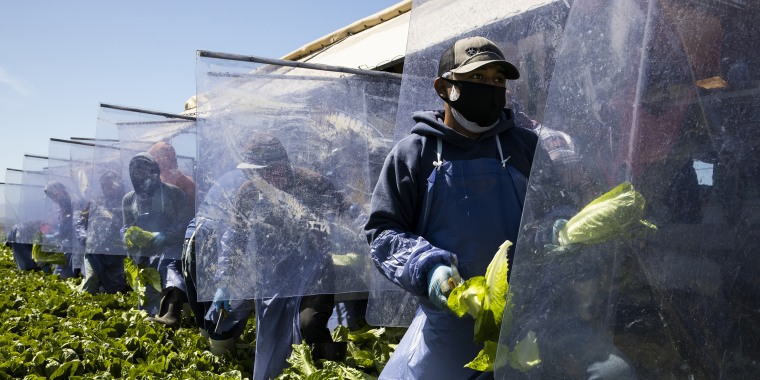While this year's Thanksgiving celebrations are likely to be smaller than usual due to the pandemic, plenty of Americans are still planning to prepare classic recipes and dishes, or order them from their favorite restaurants.
On Twitter, one organization is trying to raise awareness about the labor that goes into harvesting the ingredients for those meals.
"Tell us your favorite Thanksgiving dish, and we’ll share some of what we know about the work behind the ingredients," tweeted United Farm Workers, a labor union that fights for the rights of farmworkers in the U.S., on Sunday. The post also included the hashtags #WeFeedYou and #ThankAFarmworker, along with a video of workers harvesting and packaging green vegetables.
The tweet quickly went viral, garnering thousands of likes and retweets, as users asked for more information about Thanksgiving staples like stuffing, squash and cranberries.
The account also shared information about the processes behind vegetables like leeks and radishes.
Aromatics like garlic and ginger, which serve as the foundation of our dishes, require intense work.
The list includes dozens of different options, and almost every video or photo includes information abut the dangerous work conditions, such as intense heat or concerns about injury. Many of the posts also shared details about the pay rates for the work being performed, and some included information about state rules and regulations that allow for particularly dangerous conditions. Many of the workers pictured are paid a "piece rate" which, according to the National Farm Worker Ministry, means that they are paid based on how much they harvest in a day.
The piece-rate system has led to concerns about overworking and underpaying workers, who may make less than minimum wage because of it. While some federal laws aim to make sure that farmworkers are paid the minimum wage, those laws have loopholes and are not always enforced, according to the National Farm Worker Ministry.
Farmworkers, particularly Hispanic and Latino farmworkers, have been especially hard-hit by the coronavirus pandemic. A report from the Centers for Disease Control and Prevention (CDC) released in October said that Hispanic and Latino employees make up about 37% of the workforce they polled but accounted for 73% of reported coronavirus cases in that population.
The study also found that non-Hispanic Black people represent 5.9% of the surveyed workforce but make up 6.3% of reported cases. Those of Asian or Pacific Islander descent account for 4.1% of cases while representing just 3.5% of the workforce.
"Our study supports findings from prior reports that part of the disproportionate burden of COVID-19 among some racial and ethnic minority groups is likely related to occupational risk," the study reads.
The CDC has released specific guidance aimed at protecting farmworkers, who were deemed essential workers during the pandemic. Those guidelines recommend access to clean water for hand-washing, encourages operators to have a plan in place in case of illness or an outbreak, and recommends that other precautions like masking and social distancing be maintained.
